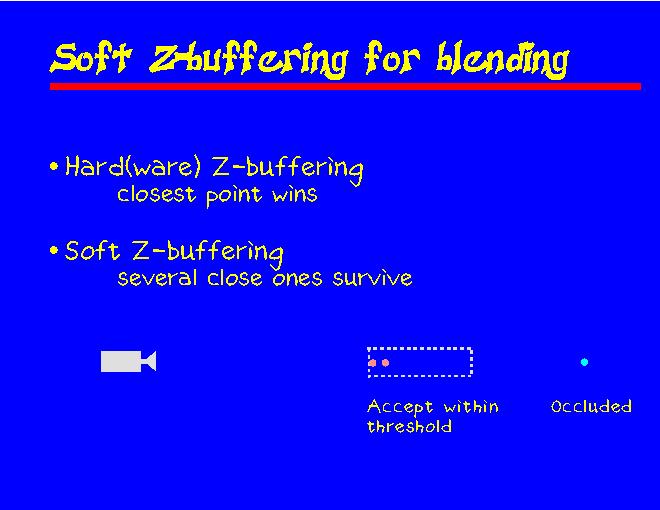Click slide for next, or goto previous, first, last slides or back to thumbnail layout.

Click slide for next, or goto previous, or back to thumbnail layout.
Click slide for next, or goto previous, first, last slides or back to thumbnail layout.

Click slide for next, or goto previous, or back to thumbnail layout.
We use a method we call soft z-buffering for determining the occlusions referred to in the previous slide.
In hardware z-buffering the closest point always wins. In our soft z-buffering, several close ones can survive.
In the picture we have three input pixels. Two of them are almost at the same distance from the viewer, while the third one is clearly behind (it even has a different color). The basic rule is: find the closest input, then accept all inputs within a threshold, and throw others away.